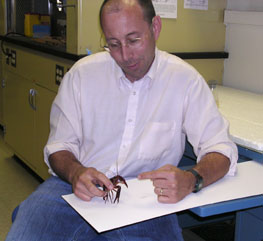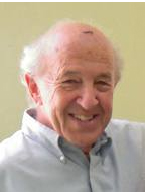A&S 500-sec005
Also listed Bio650: Neurophysiology Lab
Spring 2013
see poster about course (download ppt)
Spring 2013:
| Back to Home Page |
A&S 500-sec005 Also listed Bio650: Neurophysiology Lab Spring 2013 see poster about course (download ppt) |
||
|
Spring 2013:
|
|||
|
|
||||||||||||||
| Instructor: | ||||||||||||||
 |
Dr.
Robin L. Cooper RLCOOP1@email.uky.edu Office: Biology, rm 226 Tel: 257-5950 Office Hours: email for appt. WWW Home page (go to) |
TA for course: Ms. WenHui Wu |
work together
Focus on what you are doing so I do not have to do this to you: See movie. |
|||||||||||
| Others helping out in the course: | ||||||||||||||
|
Zana R. Majeed Graduate student in Biology at UK & Faculty member in Dept. of Biology, College of Sci, Univ. of Salahaddin, Erbil, Iraq. |
 |
Josh Titlow Graduate student in Biology at UK |
||||||||||||
|
Dr. John G. Nicholls Dr. Nicholls helped teach the neurobiology of the leech. |
||||||||||||||
|
Ellen Burns Sr undergraduate |
Audra Stacy Sr undergraduate |
Sarah Kenney Sr undergraduate |
||||||||||||
|
|
||||
| Jump to on this page: | Course outline (go to) | Course schedule & experiments (go to) | ||
|
|
||||
|
Development of the course: Cooper, R.L., Titlow, J. and Majeed, Z.R. (2012). Introduction of a new neurophysiology laboratory for students at the University of Kentucky. Annual Meeting of Society for Neuroscience. New Orleans, LA., USA. (ppt)
|
|
|
|||
|
TOPICS
AND READINGS-TENTATIVE SCHEDULE Week, Topics, Student-driven In-class Activities 1. January 10, 2013 - Learn about equipment (extracellular & intracellular amps, microscopes, electrode puller). Solutions and laboratory tools. Animal care. Lab notebooks & reports. 2. January 15, 2013 - We will start on the bread boad to learn about OHM's law and electrical conduction .................................(see this lab Page- Neuron model) 3. January 17, 2013 - Earthworm preparation to learn about conduction velocity and refractory periods ................................(see this lab Page- Earth worm experiments) 4. January 22, 2013 - Measure membrane potentials in crayfish abdomen muscles and plot Rp vs [Na]o graphs and Rp vs [K]o graphs. (see this lab PAGE- RP, K, Na) 5. January 24 & 29, 2013 - Measure facilitation and depression in tonic and phasic neuromuscular junctions in crayfish abdomen muscles. We will learn how to stimulate motor nerves and record EPSPs/IPSPs. (see this lab PAGE- EPSPs) 6. January 31 & February 5, 2013 - Learn to record from proprioceptors (extracellular) in the crab leg and relate to joint positions. Research paper discussion . (see this lab PAGE- Joint receptors in a crab) 7. February 7, 2013 - Learn how to forward fill neurons from the crab leg proprioceptors (CoCl2, 4-Di-2 ASP) as well as stain with methylene blue. (see this lab PAGE- Staining of Joint receptors in a crab) 8.
February 12 & 14, 2013 - Review - EXAM 1
- Learn to record from tension receptors in the crab leg related to
muscle length and contraction. (see
this lab PAGE- tension
nerve recordings) 9. February 19, 2013 - EEG Human lab (go to lab EEG lab page) 10. February 21 & 26, 2013 - Introduction to the leech nevous system and practice dissection. Staining of leech ganglia. Prepare for Dr. Nicholls visit. 11. February 28, 2013 - Learn how to dissect the leech ventral nerve cord and obtain intracellular recordings from identified neurons. Current injections and threshold measures. Potentially two intracellular electrodes and record in situ synaptic connections. Investigate the ionic currents making up the action potentials. (see this lab PAGE- Leech ganglion lab) {Dr. John G. Nicholls will be helping out this week in the labs.} 12. March 5 & 7, 2013 - -Mapping skin receptive fields on the leech while recording from neurons. Dye fills. (see this lab PAGE- Leech Skin lab) March 12 & 14, 2013 - Spring break 13. March 19 & 21, 2013 - Learn how to remove and culture leech neurons for forming synapses in culture. (see this lab PAGE- Leech neuron culture lab) 14. March 26, 2013 -Catch up on experiments and analysis day. Graph data, catch up on homework and literature gathering. Plot I V curves and use Ohms law to determine Rm with crayfish skeletal muscle. 15. March 28, 2013 - Quantal analysis of synaptic transmission: Crayfish NMJ record quantal responses..(see this lab PAGE- quantal analysis ) 16. April 2, 2013 - Sensory recordings from the cockroach cerci. (see this lab PAGE- cockroach cerci ) 17. April 2, 2013 - Sensory recordings from the cockroach cerci. (see this lab PAGE- cockroach cerci ) 18. April 4 2013 -.Vision: crayfish caudal photo receptor in crayfish. ..................(see this lab PAGE- Crayfish photoreceptors lab) 19. April 11, 2013 - Pass out Computational programing of circuits: "Swimmy" is a virtual neural circuit simulator and start on it. Go over back yard brains. Might get out early. Program to download (Here) . READ PDF1, PDF2, ppt overview 20. April 16, 2013 Vision: Horse shoe crab photo receptors. ..................(see this lab PAGE- Horseshoe crab photoreceptors). A paper on the responses PDF 21. April 18, 2013 - Hand in homework from computational programing of circuits: "Swimmy" is a virtual neural circuit simulator. Will also go over issues in class on it. 21. April 23. No class. Work on your own out of lab for write ups. 22. April 25, 2013 - Make up any labs needed. Make sure lab report is going along OK. Pass out take home exam.(Exam 2) 22. April 30 (Finals week) Turn in final exam and reports. |
|||
|
|||
| Back to TOP |